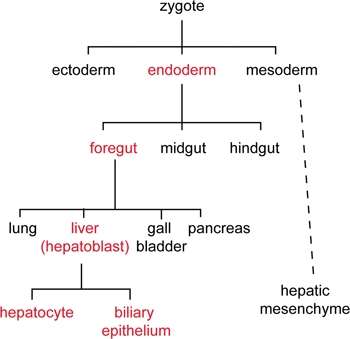Cell lineage

Cell lineage denotes the developmental history of a tissue or organ from the fertilized embryo.[1] Cell lineage can be studied by marking a cell (with fluorescent molecules or other traceable markers) and following its progeny after cell division. Some organisms such as C. elegans have a predetermined pattern of cell progeny and the adult male will always consist of 1031 cells, this is because cell division in C. elegans is genetically determined and known as eutely.[2][3] This causes the cell lineage and cell fate to be highly correlated. Other organisms, such as humans, have variable lineages and somatic cell numbers.
C. elegans: Model Organism
As one of the first pioneers of cell lineage, in the 1960s Dr. Sydney Brenner first began observing cell differentiation and succession in the nematode Caenorhabditis elegans. Dr. Brenner chose this organism due to its transparent body, quick reproduction, ease of access, and small size which made it ideal for following cell lineage under a microscope.
By 1976, Dr. Brenner and his associate, Dr. John Sulston, had identified part of the cell lineage in the developing nervous system of C. elegans. Recurring results showed that the nematode was eutelic (each individual experiences the same differentiation pathways). This research led to the initial observations of programmed cell death, or apoptosis.
After mapping various sections of the C. elegans' cell lineage, Dr. Brenner and his associates were able to piece together the first complete and reproducible fate map of cell lineage. They later received the 2002 Nobel prize for their work in genetic regulation of organ development and programmed cell death. [4]
History of Cell Lineage
One of the first studies of cell lineages took place in the 1870s by Whitman who studied cleavage patterns in leeches and small invertebrates.[5] He found that some groups, such as nematode worms and ascidians form a pattern of cell division which is identical between individuals and invariable. This high correlation between cell lineage and cell fate was thought to be determined by segregating factors within the dividing cells. Other organisms had stereotyped patterns of cell division and produced sublineages which were the progeny of particular precursor cells. These more variable cell fates are thought to be due to the cells' interaction with the environment.[5]
Techniques of Fate Mapping
Cell lineage can be determined by two methods, either through direct observation or through clonal analysis. During the early 19th century direct observation was used however it was highly limiting as only small transparent samples could be studied. With the invention of the confocal microscope this allowed larger more complicated organisms to be studied.[5]
References
- ↑ Collins English Dictionary - Complete & Unabridged 10th Edition. HarperCollins Publishers. Retrieved 2 June 2014.
- ↑ Sulston, JE; Horvitz, HR (1977). "Post-embryonic cell lineages of the nematode, Caenorhabditis elegans". Developmental Biology. 56 (1): 110–56. doi:10.1016/0012-1606(77)90158-0. PMID 838129.
- ↑ Kimble, J; Hirsh, D (1979). "The postembryonic cell lineages of the hermaphrodite and male gonads in Caenorhabditis elegans". Developmental Biology. 70 (2): 396–417. doi:10.1016/0012-1606(79)90035-6. PMID 478167.
- ↑ "The Nobel Prize in Physiology or Medicine for 2002 - Press Release". www.nobelprize.org. Retrieved 2015-11-23.
- 1 2 3 Chisholm, A D (2001). "Cell Lineage" (PDF). Academic Press: 10. doi:10.1006/rwgn.2001.0172.